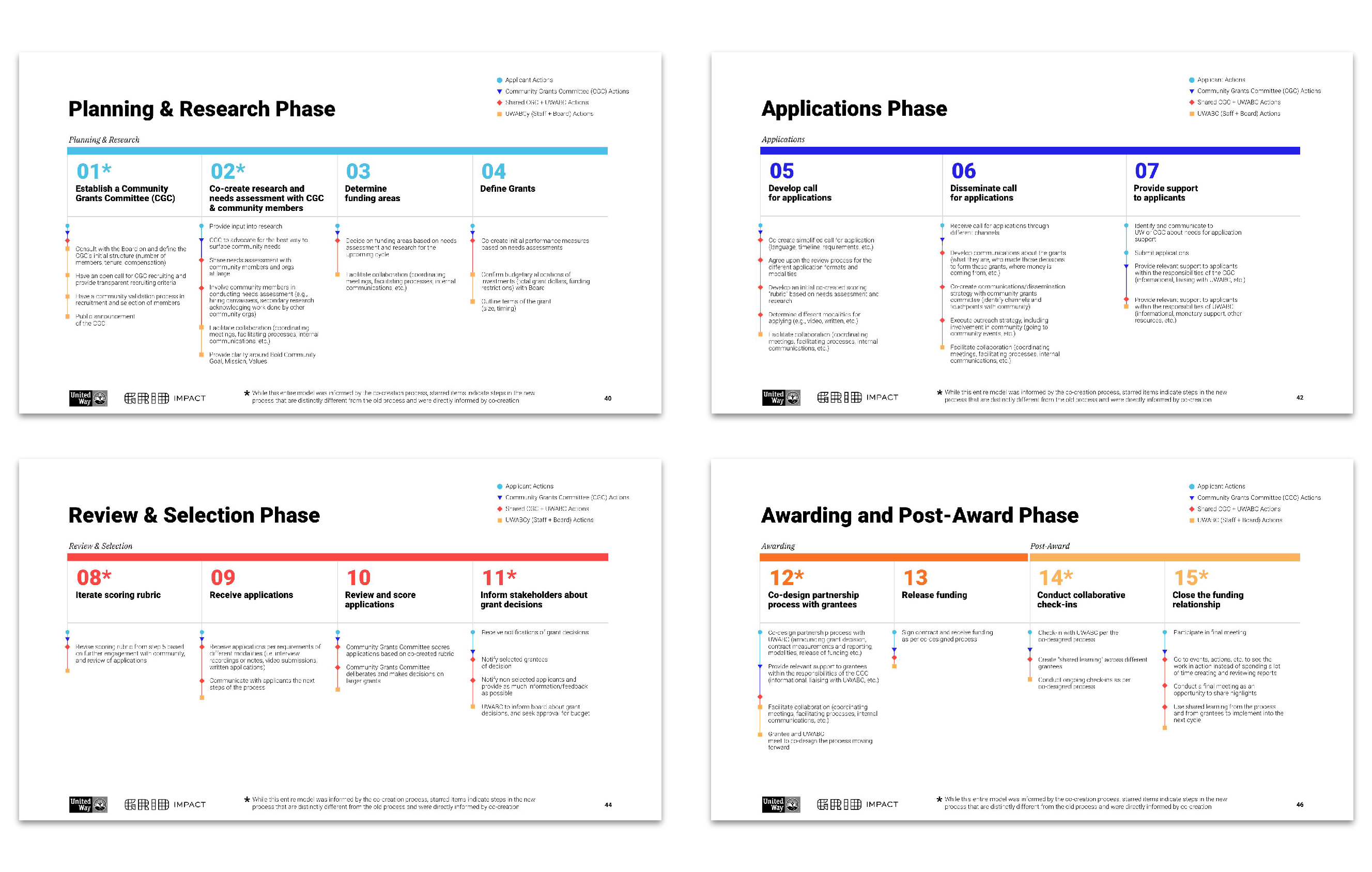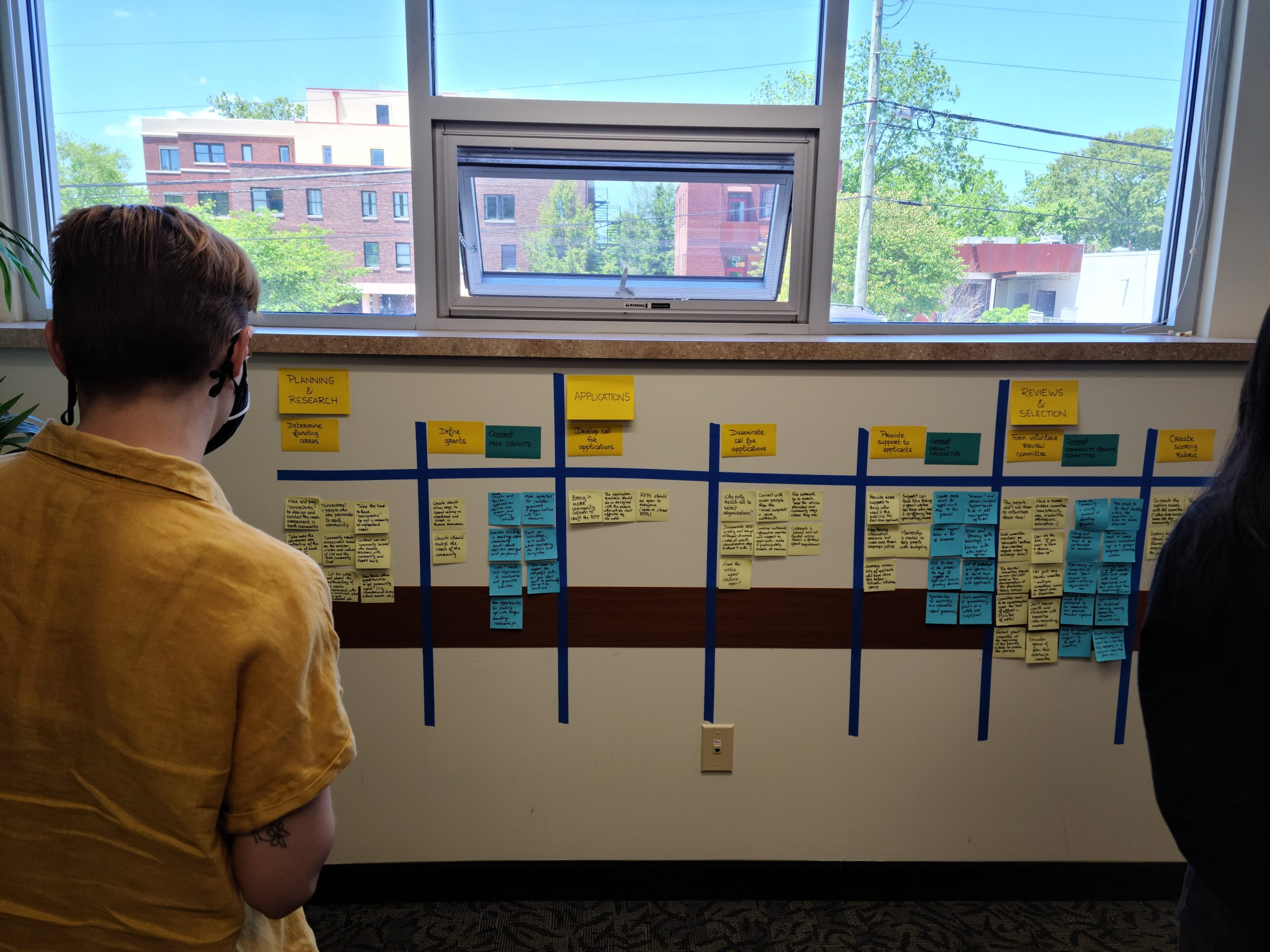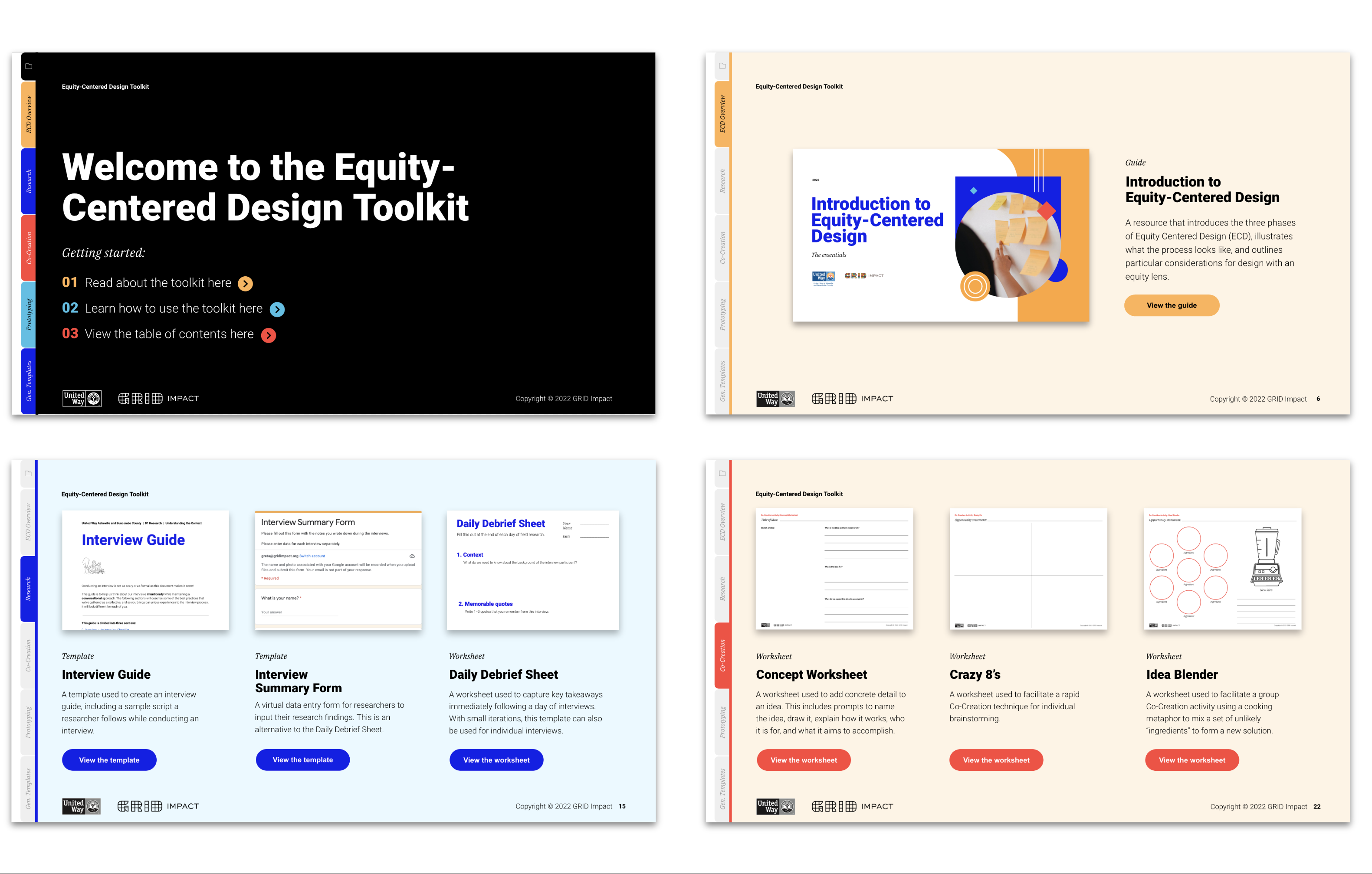Introduction
The Context
United Way of Asheville and Buncombe County (UWABC) is a locally-governed, nonprofit organization working towards a vision of “a united and resilient community where everyone belongs and everyone thrives.” One of their primary strategies of change is through community investment and grantmaking. For 100 years, UWABC has invested in nonprofit health and human service providers of all types. While the system has evolved over the years, neither the application process nor the decision-making table has been equally accessible to all organizations and individuals in their community.
The Opportunity
As their latest grant-making cycle was ending in 2022, UWABC asked “How might our community design an investment & grantmaking model that centers authentic and equitable community participation in all stages of decision making?
GRID’s Role
Using equity-centered design, we coached community Design Fellows and led the project team through the equity-centered design process to reimagine the community investment model.

Year
2021-2022
Services
Participatory Research
Co-creation
Co-design
Prototyping
Design Coaching
Partner(s)
United Way of Asheville and Buncombe County
The Approach & Process
We conducted the following phases of work as a project team:
- Community Conversations: Facilitated by UWABC and the Community Conversations Committee (made up of members of the local community), these conversations invited people to share their stories and experiences in order to inform areas of grantmaking for the future.
- Equity-Centered Design with Design Fellows: We worked together with a group of five community members who stepped into the role of Design Fellows. Throughout the project, we coached them through the Equity-Centered Design process so they could go into community and lead equity-centered activities with other community members to co-design the community investment model. We focused on conducting interviews, facilitating workshops, and prototyping as central pillars of their Equity-Centered Design training.
- Toolkit Creation: We captured and documented all the tools that we used throughout the project, and built a toolkit that guides people through the Equity-Centered Design process. This toolkit is now accessible to all members of UWABC and their local community so they can carry on the Equity-Centered Design process on future projects and engagements.


The Outcome
At the end of the project, we came to a set of community-driven recommendations for a potential community investment model to change how $350,000,000 will be gifted to organizations and members of the community of Asheville and Buncombe County, North Carolina.
The potential community investment model represents a power shift from traditional, grass-tops, white-led funding processes towards a new process that aims to shift power into the hands of organizations that directly impact their communities.
As part of the project, we have also built an extensive Equity-Centered Design Toolkit for United Way to continue using long after our engagement ends.
Click here to see the toolkit.




